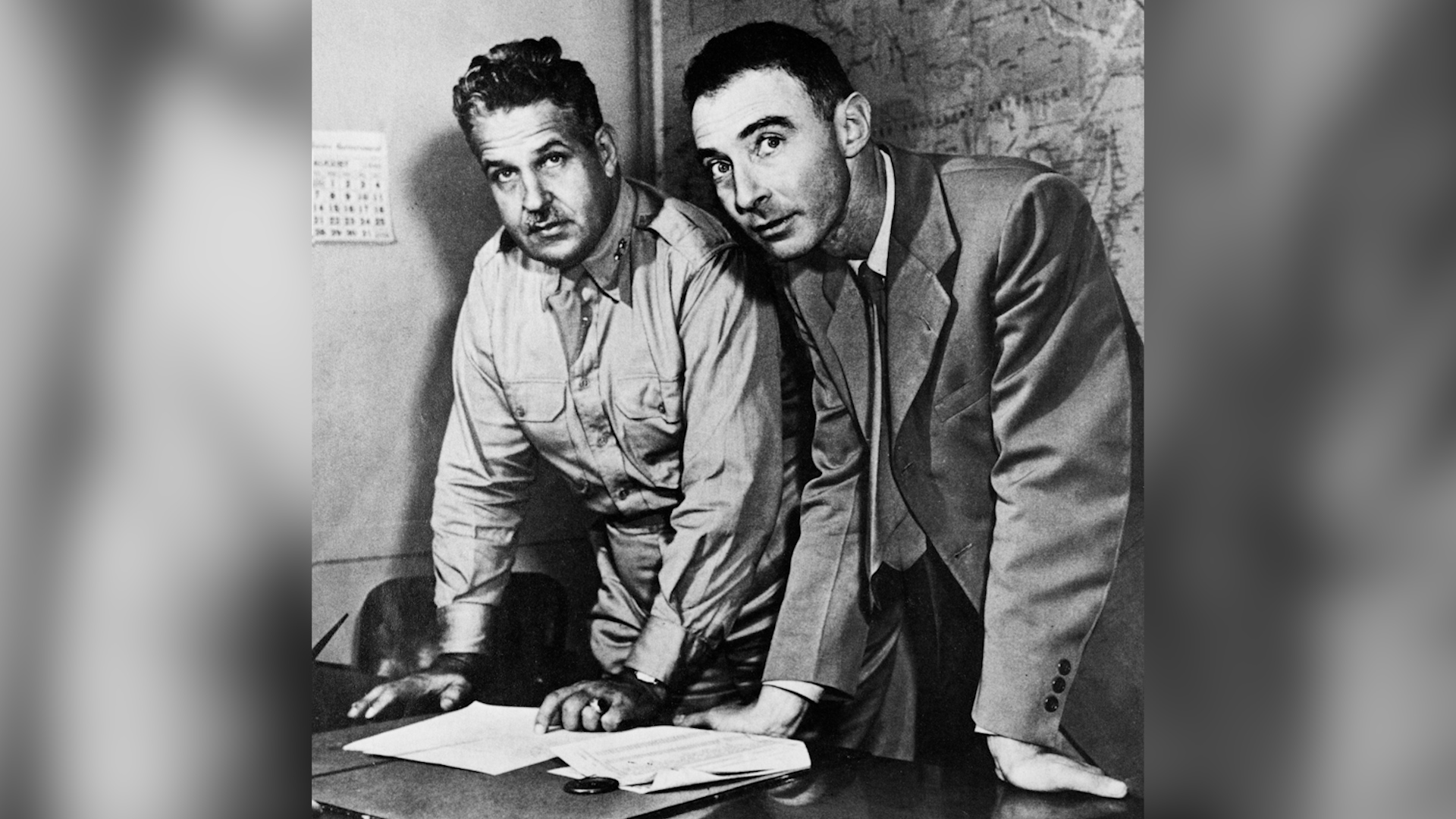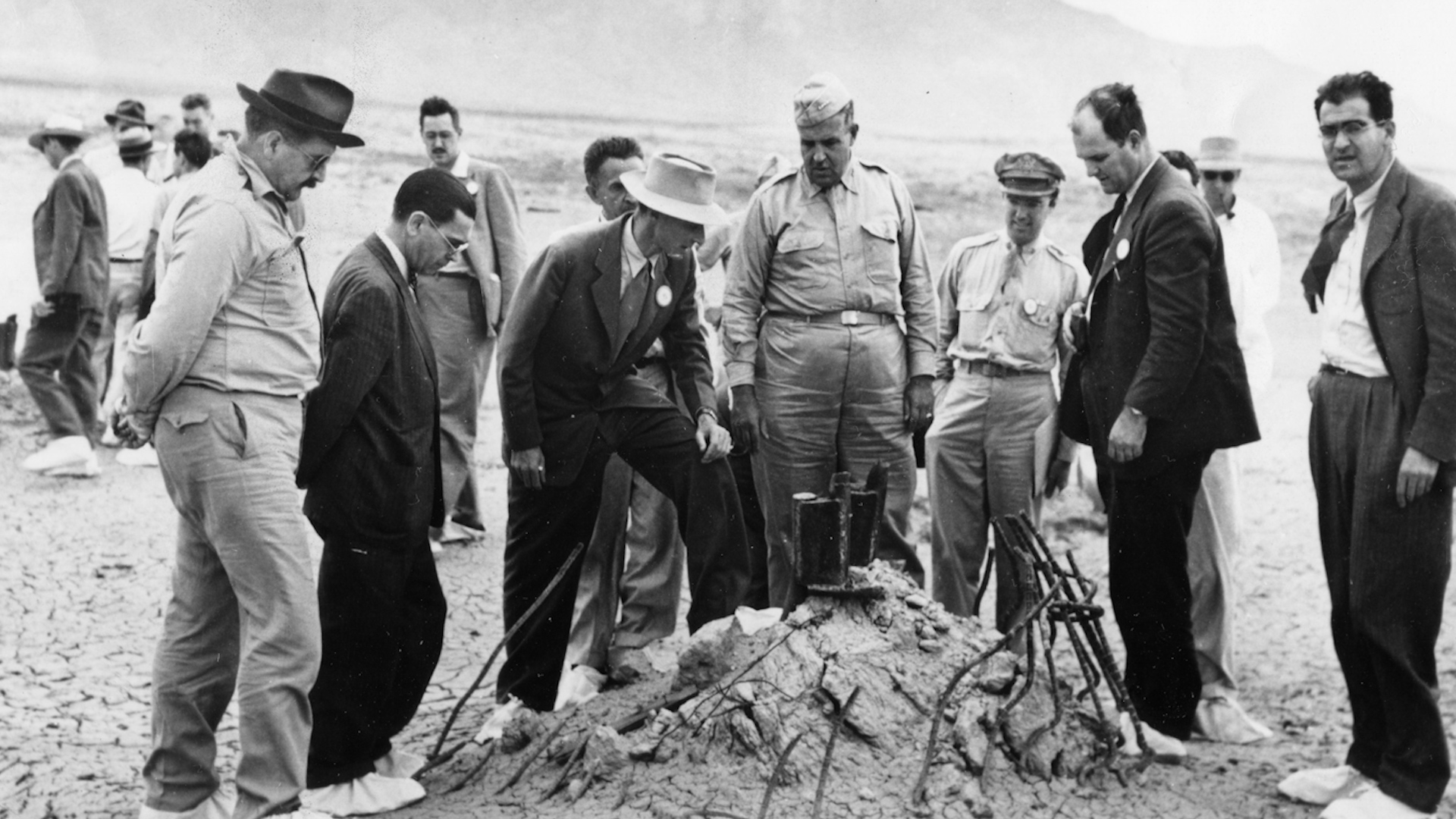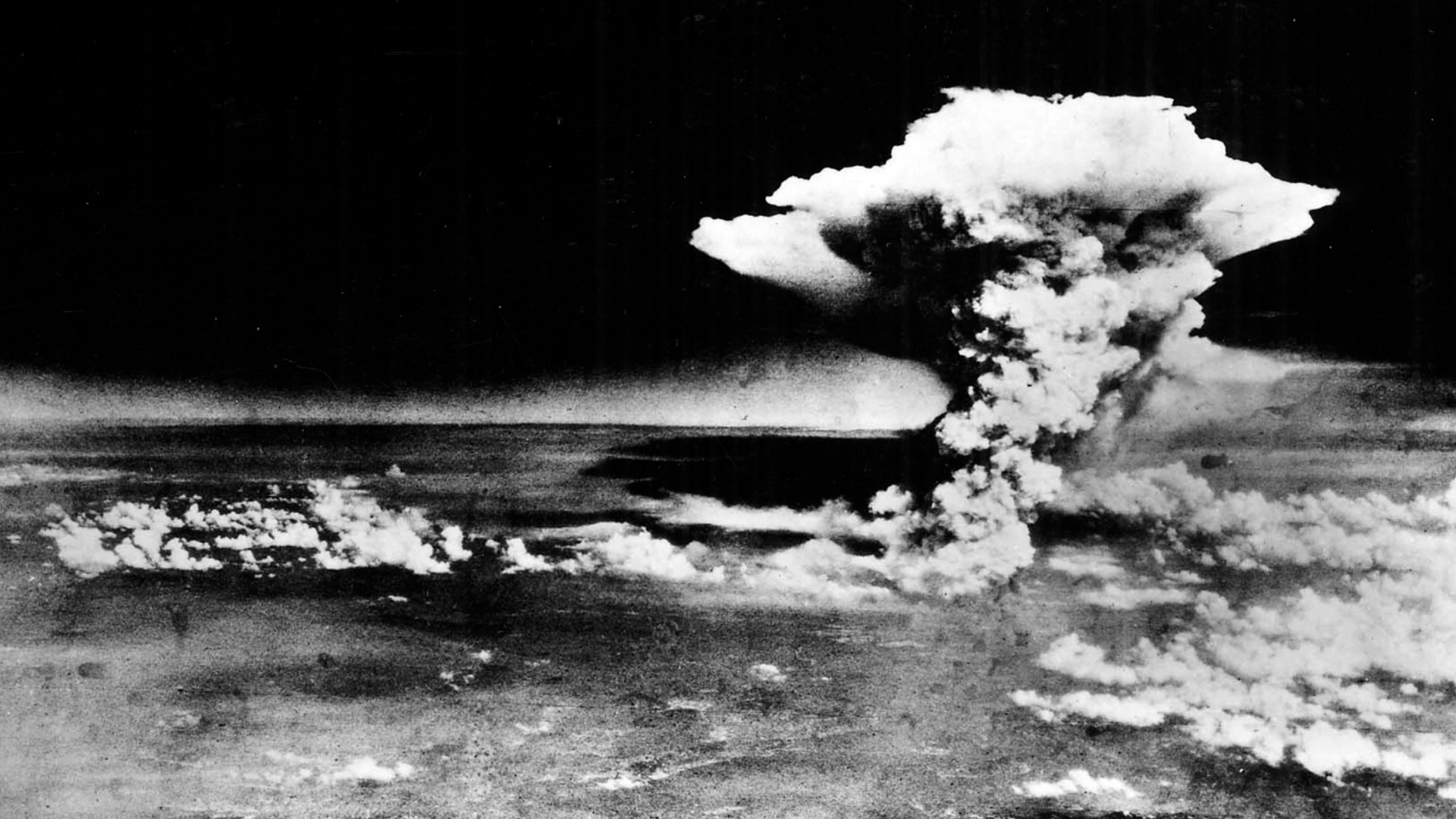
Oppenheimer: Who is the 'father of the atomic bomb'?

Christopher Nolan's latest film focuses on Julius Robert Oppenheimer, the three-time Nobel Prize nominated physicist who developed a weapon that would alter the course of the Second World War.
Oppenheimer would lead a team of the best scientists from America and Europe in creating something that would change the world forever.
Forces News has taken a look at the man often known as the 'father of the atomic bomb'.
Oppenheimer was born on 22 April 1904, in New York City, to German Jewish immigrants.
At Harvard University, Oppenheimer studied mathematics and science, philosophy and Eastern religion, and French and English literature.
He would then travel to Cambridge, in the UK, to begin work in physics, becoming a research assistant to Nobel Prize winner JJ Thomson – the man who detected the electron. Later, he would attend the University of Göttingen, in Germany, to study quantum physics.
Oppenheimer travelled from one prominent centre of physics to another: Harvard, California Institute of Technology, Leyden, and Zurich.
The Second World War then interrupted the work and lives of most American physicists.

In 1938, chemists working in a laboratory in Berlin, Germany, made the discovery that would alter the course of history: they split the uranium atom.
The energy released when this splitting, or fission, occurs is immense – enough to power a dangerous bomb.
Theoretical physicist Albert Einstein, on learning that the Germans may be able to build an atomic bomb, wrote to US president Franklin Roosevelt with his concerns.
Einstein's 1939 letter would help in initiating the US's effort to build an atomic bomb.
Oppenheimer joined these efforts after also recognising that Adolf Hitler's Nazi Germany could develop the world's first nuclear weapon.
The Manhattan Project
In 1942, General Leslie Groves invited Oppenheimer to become the scientific director of the Manhattan Project, the top-secret US project to develop the atomic bomb.
Oppenheimer would then select a location in Los Alamos, New Mexico, in which the US Army would assemble a series of laboratories there.
Physicists from across the US and Europe were brought to Los Alamos and tasked with the bomb.

'We knew the world would not be the same'
Oppenheimer had little experience in managing a project of this scale, with his team even growing from just a few hundred to several thousand.
However, just three years into the Manhattan Project, Oppenheimer and his team were ready to test their atomic bomb.
The 'Trinity' test was conducted on 16 July 1945 at Alamogordo, New Mexico.
Oppenheimer watched from a control bunker as the world's first nuclear explosion erupted.
After the bright flash of light, Oppenheimer reportedly let out a huge sigh of relief with his first words being: "I guess it worked".
He would later famously recall that the moment brought to mind words from a sacred Hindu text: "We knew the world would not be the same.
"A few people laughed, a few people cried. Most people were silent. I remembered the line from the Hindu scripture, the Bhagavad Gita, 'Now I am become Death, the destroyer of worlds'. I suppose we all thought that, one way or another."
'Woe is me'
On 6 August 1945, less than a month after the test, the first atomic bomb was dropped on Hiroshima, Japan.
"Woe is me," Einstein reportedly said upon hearing the news of the Hiroshima bombing.
After the devastation of Hiroshima, he and many scientists on the project publicly expressed deep regret.
In an interview with Newsweek magazine, he said "had I known that the Germans would not succeed in developing an atomic bomb, I would have done nothing".
Just three days after Hiroshima, on 9 August 1945, the US dropped another atomic bomb on the city of Nagasaki, Japan.
By the end of 1945, an estimated 200,000 people had died in the two cities.
Oppenheimer was said to have been distraught that the bomb was used twice, believing the second bomb was unnecessary.
In a meeting with US President Truman, a few days later, he reportedly expressed his disgust at Nagasaki, according to several accounts telling Truman that he felt there was "blood on his hands".

After the war
Oppenheimer became a household name, featuring on magazine covers such as Life and Time.
He would become chairman of the General Advisory Committee of the Atomic Energy Commission (AEC) in 1947.
Controversially, he opposed the development of the hydrogen bomb – a position that would frustrate those who wanted to take a firm stance against the growing Soviet threat.
Oppenheimer was removed from his role at the AEC in 1954 after allegations surfaced of him having Communist sympathies.
In 1963, Oppenheimer was eventually given a symbolic political restoration by the US government, when President John F Kennedy awarded him the Enrico Fermi Award, (although President Lyndon B Johnson presented him with it after JFK's assassination).
Oppenheimer continued to lobby for international control of nuclear weapons and atomic energy in his later years.
On 18 February 1967, just a year after retiring, he died of throat cancer in Princeton, New Jersey.

Latest film iteration
The film, which is based on the Pulitzer Prize-winning book American Prometheus: The Triumph and Tragedy of J. Robert Oppenheimer, sees physicist Oppenheimer (played by Peaky Blinder's Cillian Murphy) working on developing the first atomic bomb.
Cillian Murphy said it "took a toll" to play J Robert Oppenheimer in Christopher Nolan's new film.
The Irish actor, 47, added that the "moral dilemmas and paradoxes" his character grapples with throughout the film are "huge".
"It does take a toll, but in a brilliant way, it was the biggest, most exhilarating challenge," Murphy said.
Director Christopher Nolan reportedly recreated the nuclear explosion without the use of CGI for the film.
According to recent reports, Nolan overcame the challenges of depicting an atomic explosion without recruiting computer-generated imagery for the adaptation.
The biopic showcases a sequence involving the first atomic detonation in New Mexico, the monumental event occurred a month before the US dropped the similar devastating bombs on Nagasaki and Hiroshima.
"Recreating the Trinity test without the use of computer graphics was a huge challenge to take on," Nolan told Total Film.
"Andrew Jackson – my visual effects supervisor, I got him on board early on – was looking at how we could do a lot of the visual elements of the film practically, from representing quantum dynamics and quantum physics to the Trinity test itself…there were huge practical challenges."
The film, also stars Emily Blunt (A Quiet Place), Robert Downey Jr (Ironman), Matt Damon (Jason Bourne) and Florence Pugh (Little Women).
Oppenheimer opens in cinemas on Friday 21 July.








